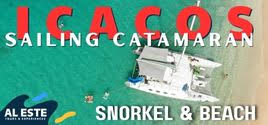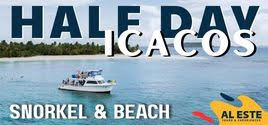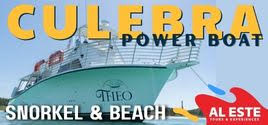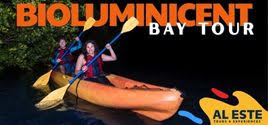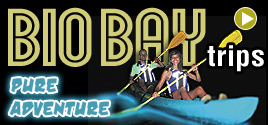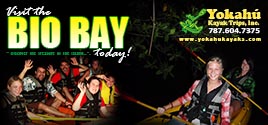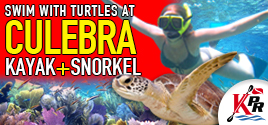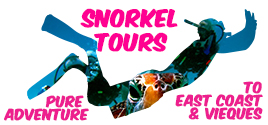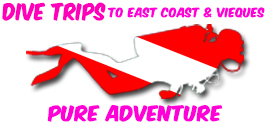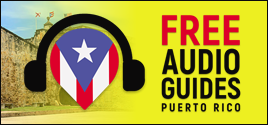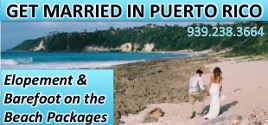Kayaking in Ceiba with Para la Naturaleza
This specific tour may not always be available. They sometimes offer just a walking tour to the bird area and beachy surrounds. Check their tours page for current offerings.
Para la Naturaleza offers many interesting and educational tours that are usually in incredibly beautiful locations. This non-profit conservation organization owns and protects many environmentally and culturally significant parcels of land across the island, and they offer educational tours to help people enjoy and understand the importance of their holdings. Para la Naturaleza has recently started offering tours on the land they acquired in the old Roosevelt Roads Naval Station in Ceiba. We were invited to check out the mangroves with them, via kayak. So of course, we went!

Background
The Roosevelt Roads area is huge, and it had been closed off to visitors for a long time, starting when the US Navy built the base in 1943. The base was in operation until 2004, and since then more and more of the old base area is being opened to the public. We’ve driven around and explored the newly-opened public areas, but it is full of abandoned and dilapidated buildings and other trash … so much wasted potential.
A few years ago, Para la Naturaleza acquired 3408 acres of land for conservation purposes in an area known as Medio Mundo y Daguao. They also have a building close to the piers that will be used as a visitors’ center and community service offices. They, along with others, are working to restore the area back to its natural state.
Over time, they will offer a number of different tours. We recently did a tour of Los Machos Wetlands. Here, we saw a bird estuary, mangrove channels, and even kayaked out to the coral reef. Each of these areas are different, but all of it is full of life. Bird watchers and nature lovers will love it!

The Day We Went
We met our guides, and the other people who would be on our tour, at the new Visitors’ Center. From here, we all got into their tour bus, and they drove us to the mangrove area. They explained to us how important the system of wetlands, dunes, and mangrove areas are to both wildlife and humans alike.

We stopped at a bird estuary area, where they brought out a nice telescope and set it up so we could see the different birds off in the distance. The guides knew all about them, and also had reference books/cards for us to look at. They explained how and why they do monitoring of both the water and ambient air. Lately there have been flamingos!
We got to take measurements with the various instruments — salinity tester, wind monitor, and air temperature. They discussed the different plants of the area, the different mangrove varieties, and told us all sorts of other factoids about the plants and life cycles of the area.

From here, we got back onto the bus and continued on to the mangroves. We have been kayaking in mangroves before, and usually the water is dark and stained with the tannin from the mangrove trees. But, because this was close to the mouth of the river — and the ocean water flushed it with the rise and fall of the tides — the water was crystal clear.
This was really nice … we could see the fish, rays , and other sea creatures that ventured into the channels. And there are loads of things to see. It was easy kayaking, no strong current or waves to paddle against.
At the end of the kayaking, if time and weather permit, they give you time to snorkel, to see the critters that call this underwater oasis home. It’s amazing how many juvenile fish use the mangrove roots for protection. We also took full advantage of the amazing opportunities for nature photography.
“In the end we will conserve only what we love; we will love only what we understand; and we will understand only what we have been taught”. — Baba Dioum

Normally, when we review an activity that is not free to the public, we pay the admission price out of our own pockets. However, we just want you to know that the folks at Para la Naturaleza were kind enough to offer us this trip for free. While we don’t feel that this free ride influenced our review one way or the other, we felt that we should tell you, just as a matter of fact.
Details
Check their webpage for prices of tours.
They are currently offering this tour only a few times per year. Check their web site to see when it is being offered.
Always see what language and what is provided, you should bring a bottle of water, sunscreen, hat, and other sun protection like long sleeve shirt. You should wear clothes and shoes that can get wet. Bring a change of clothes. They hav a bike tour where you need to bring your own bike.
You can call Para la Naturaleza at 787-722-5882 for more information.
You can check the Para la Naturaleza web site for more information.
They offer other tours in the area, including a combo biking/kayaking tour, and a land-based (no kayaking) tour.
To get there, from the San Juan area, you’d start out heading east on Route 66 (toll) or Route 3. In either case, you’d continue east on Route 3 through Río Grande and Luquillo, heading toward Fajardo. In Fajardo, Route 3 turns to the right, and shortly thereafter becomes Route 53 (toll). You’ll want to follow signs for the airport, and take the exit to the right just before the Route 53 toll booths. From that exit, turn to the left, under Route 53, and continue onto Route 3. Follow signs for the Ceiba Airport. Go through the guard gate (tell them where you are going). Go left at the V (away from the airport), continue by following signs for Pure Adventure and/or Black Beard Sports. You’ll see the Para la Naturaleza Visitor Center on the corner of Forrestal Drive.
Allow about 90 minutes to drive from the San Juan area to Ceiba.
Click on a placename below to view the location on Google Maps ...
Puerto Rico Day Trips LLC assumes no responsibility regarding your safety when participating in the activities described in this article. Please use common sense! If your mother or that little voice in your head tells you that you are about to do something stupid … then don't do it!


